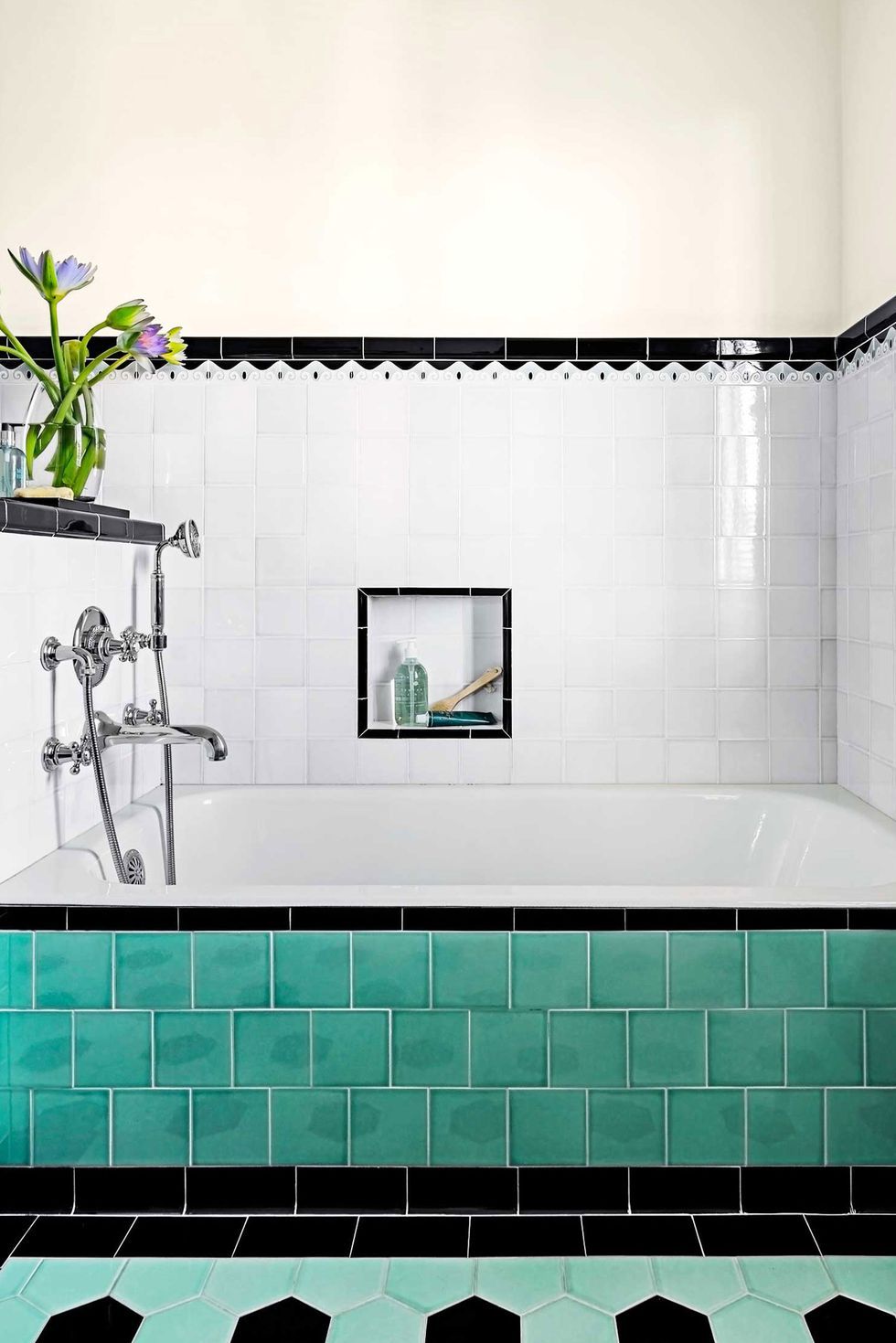Wall space can be made appealing by producing murals with mosaic tiles. An accent of designed tiles in the amount of the soap recipe is likewise an alternative. You need to draw the size of the bathroom into consideration when planning a flooring design. Moreover, it also complements the bathroom items and also the shower type.
Images about Vintage Bathroom Tile Design Ideas

You have to visit an interior designer before adding these bathroom tiles. Be sure you have the whole floor cleaned. If you arrange to replace the entire group of tiles of the bathroom, the initial thing you need to do is scrap from the present tiles with a floors scraper. Bathroom tiles are the most comprehensive aspect of your bathroom design.
Mixing Old With New: 7 Vintage Bathroom Design Ideas That Will
Bathroom tiles could also be decorated having the border for all the tiles. There are so many different styles and colours of tiles now for the bathroom, which means you are able to truly make your bathroom exclusive and make your dream bathroom become a reality. Porcelain tiles will keep an excellent finish with proper cleaning techniques.
Modern Bath, Vintage Looks – This Old House
You're going to have the ability to find bathroom tiles that are readily available for the floors of yours or your walls in addition to finding tiles which will stand out on either or even both. Finishing surfaces maintain a consistent look that presents a thoroughly clean design for bathroom walls as well as floors. It's your place of relaxation so it is just right you give it the correct treatment.
Bringing Back The Past-Vintage Bathroom Tile Ideas That Will
20 Bathroom Tile Ideas Youu0027ll Want to Steal – Decorilla
32 Beautiful Bathroom Tile Design Ideas
Make an Old Bath Fresh and Fun HGTV
10 Gorgeous Black and White Bathrooms for a Vintage Look u2013 The
50 Refined Vintage Bathroom Décor Ideas – DigsDigs
37 Best Bathroom Tile Ideas – Beautiful Floor and Wall Tile
Historic Bathroom Tile Designs: ORC Week Two u2014 T. Moore Home
Modern Bath, Vintage Looks – This Old House
Reasons to Love Retro Pink-Tiled Bathrooms HGTVu0027s Decorating
Our Favorite Sources For Mid Century Modern Bathroom Tile – Home
Related Posts:
- Orange Bathroom Tile Ideas
- Bathroom Tile Designs For Showers
- Bathroom Tiles Hexagon
- Best Homemade Bathroom Tile Cleaner
- How To Clean Bathroom Tile Grout Naturally
- Japanese Bathroom Tile
- Blue Bathroom Tile Design Ideas
- Teal Bathroom Tile Ideas
- Bathroom Tile Stain Removal
- Bathroom Tile Grout Filler

/cdn.vox-cdn.com/uploads/chorus_asset/file/19502639/vintagebath_x.jpg)








/cdn.vox-cdn.com/uploads/chorus_asset/file/19502689/vintagebath_01_0.jpg)

